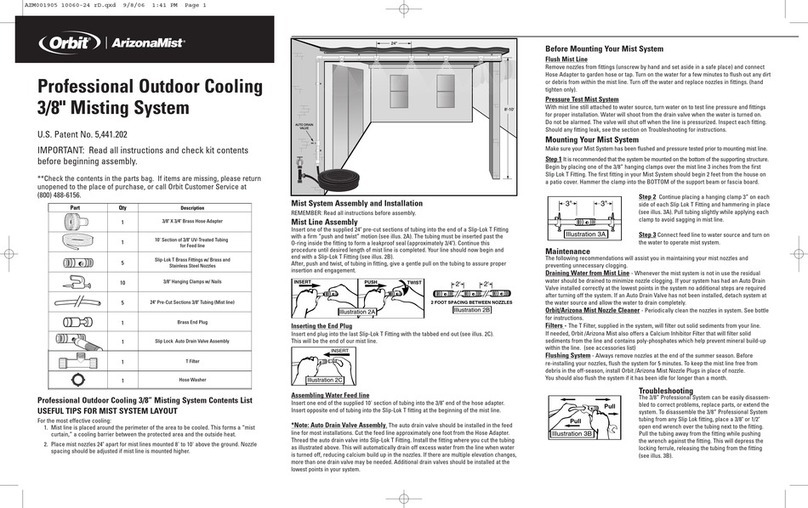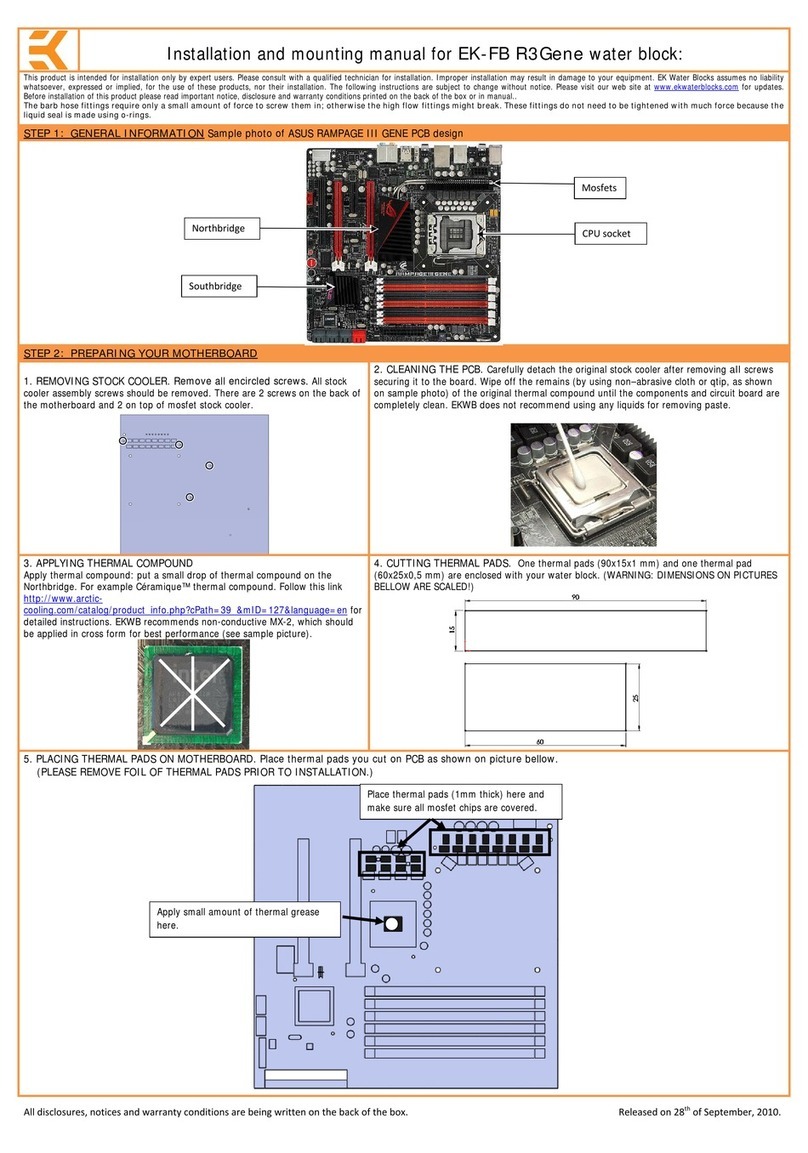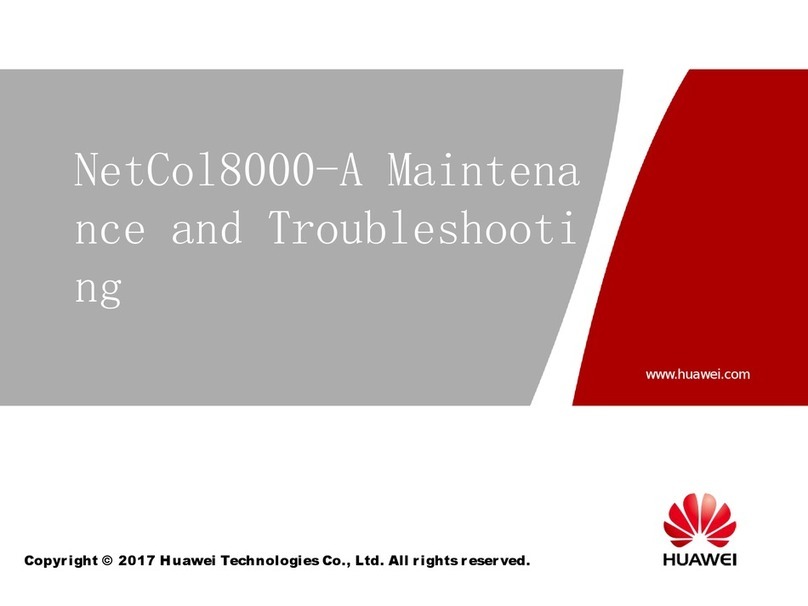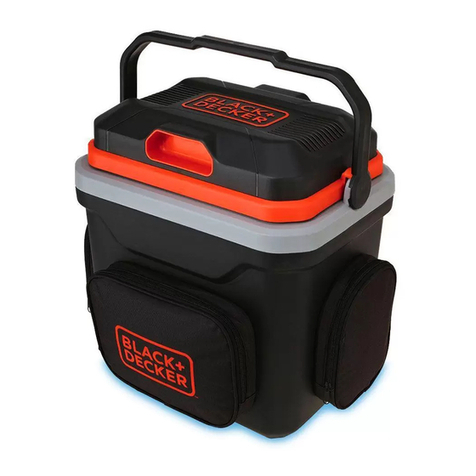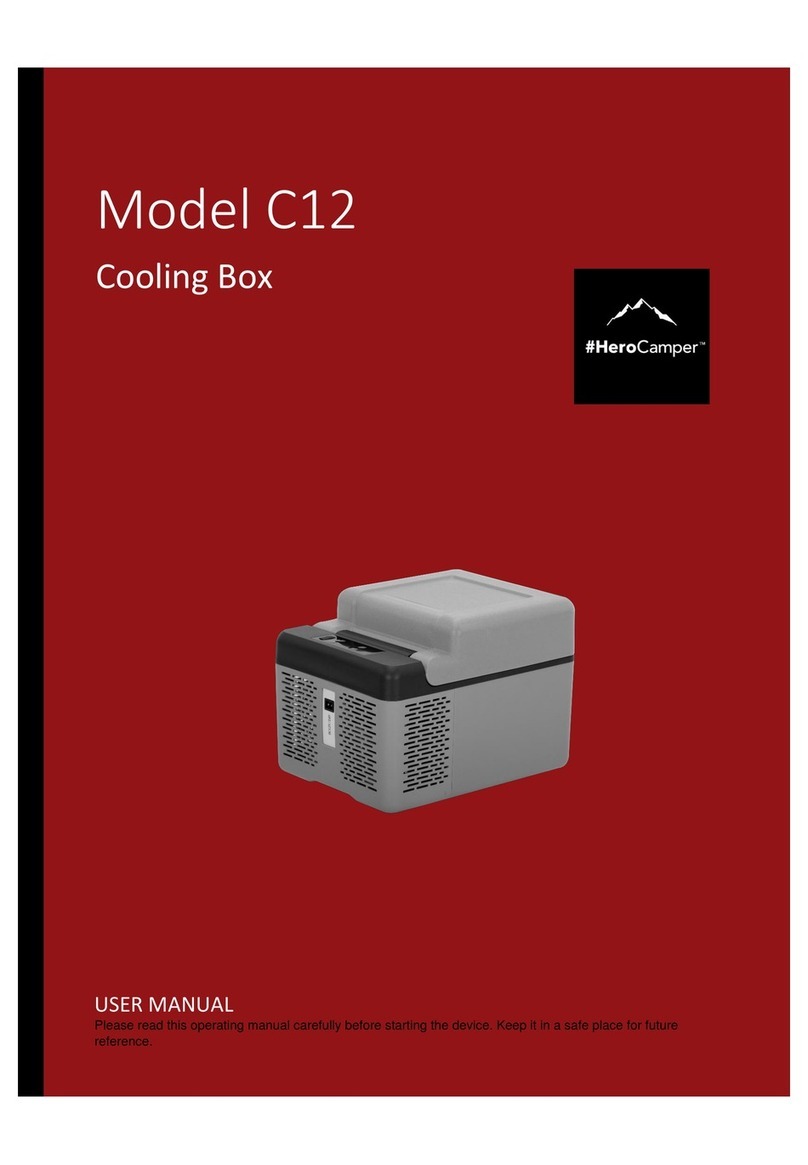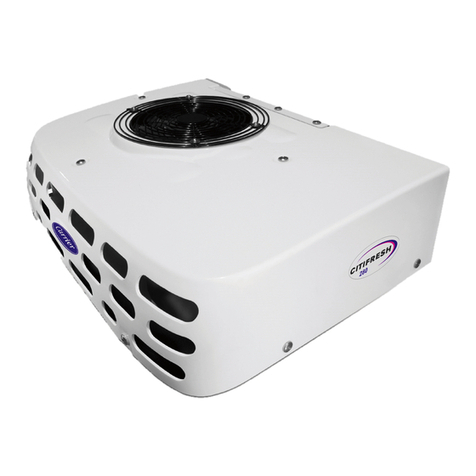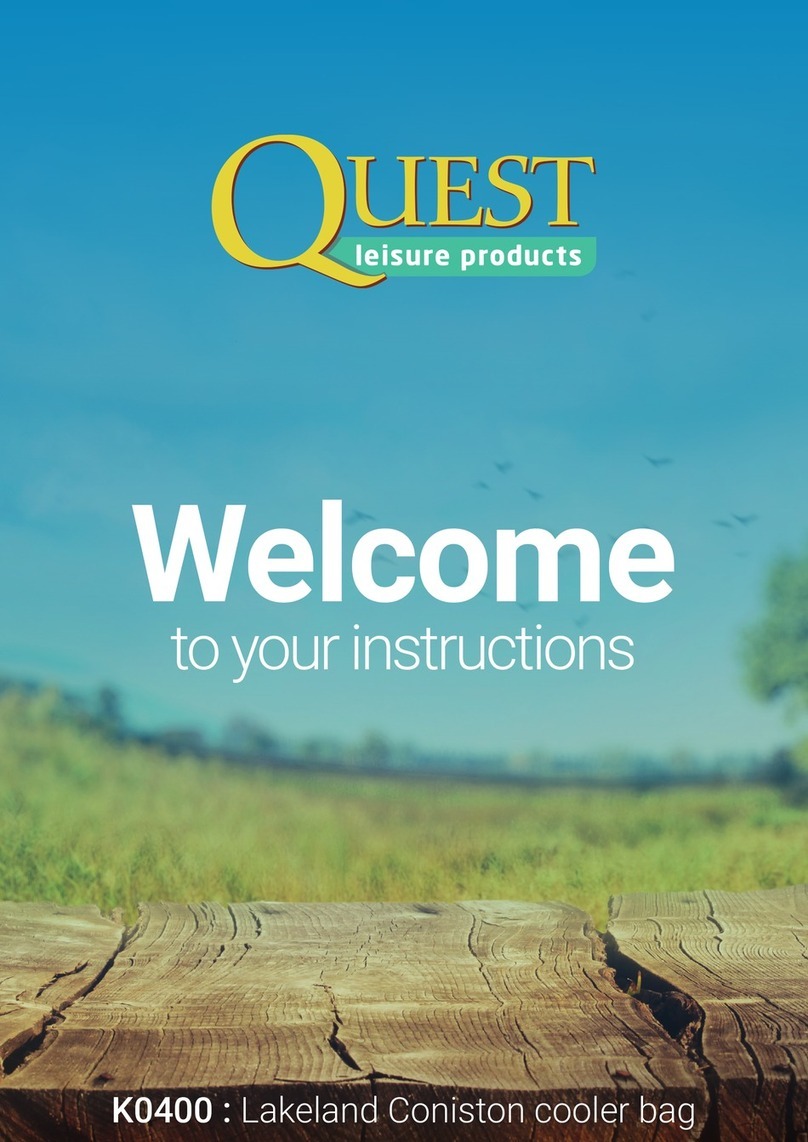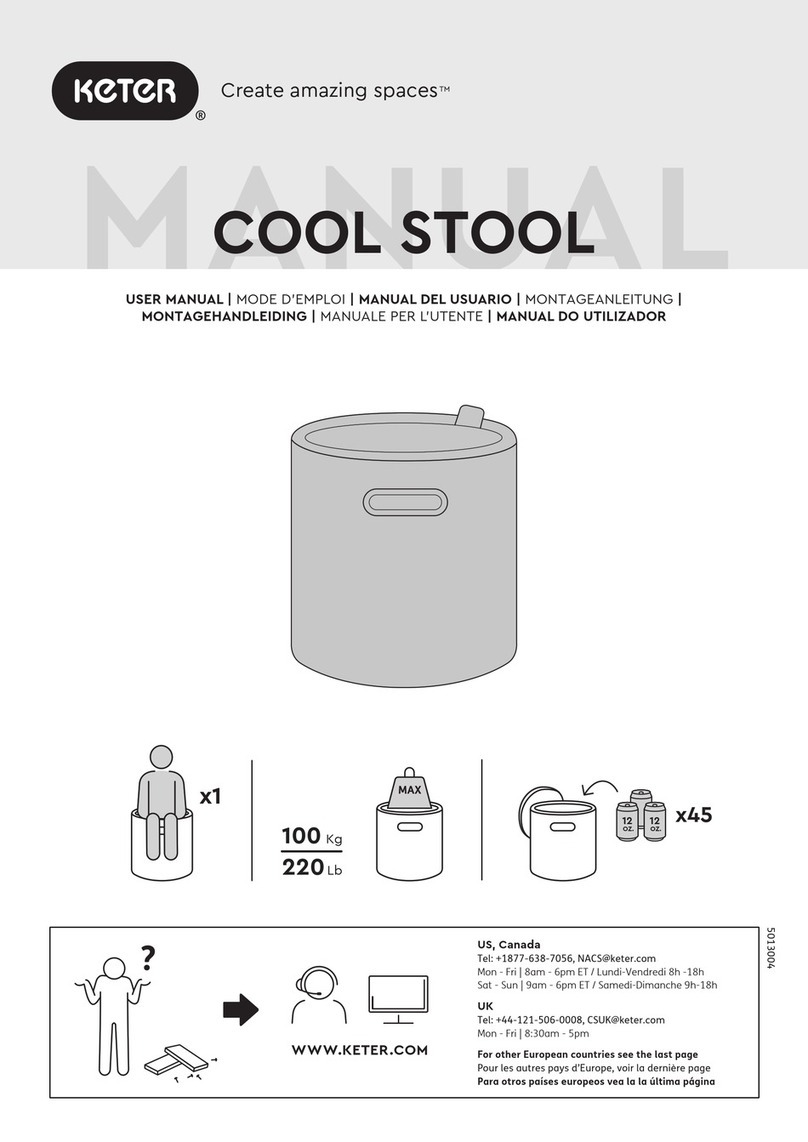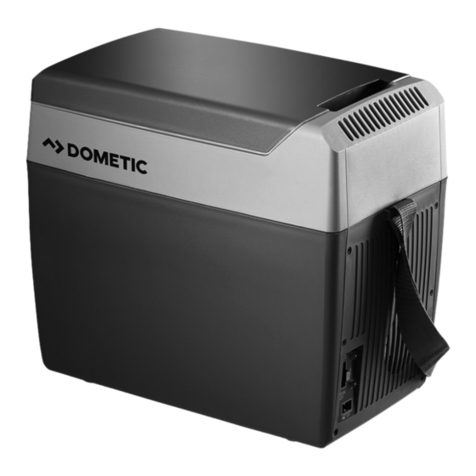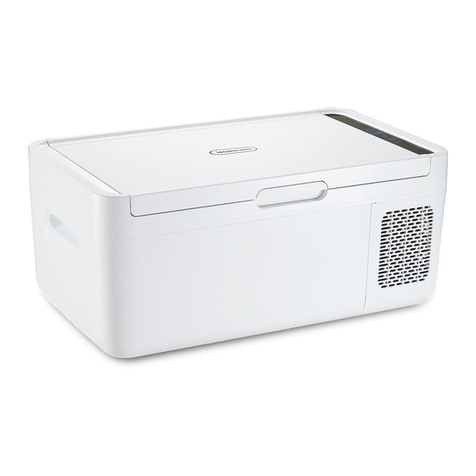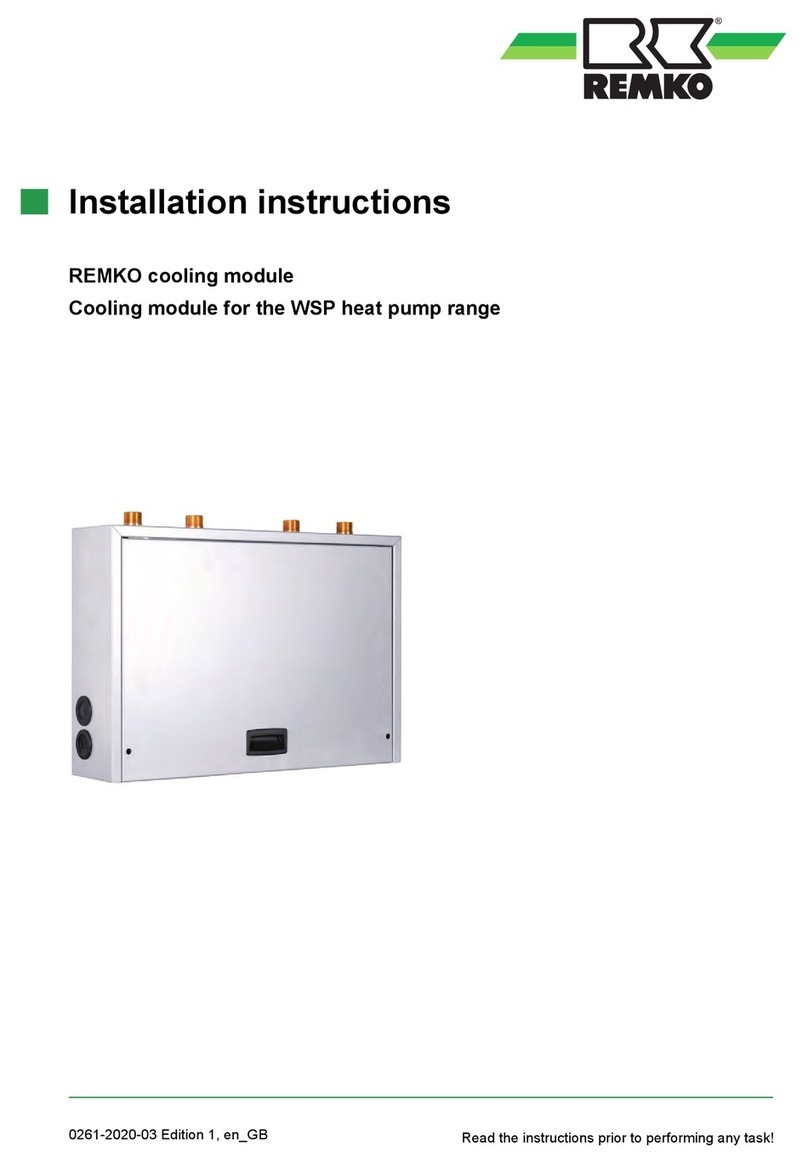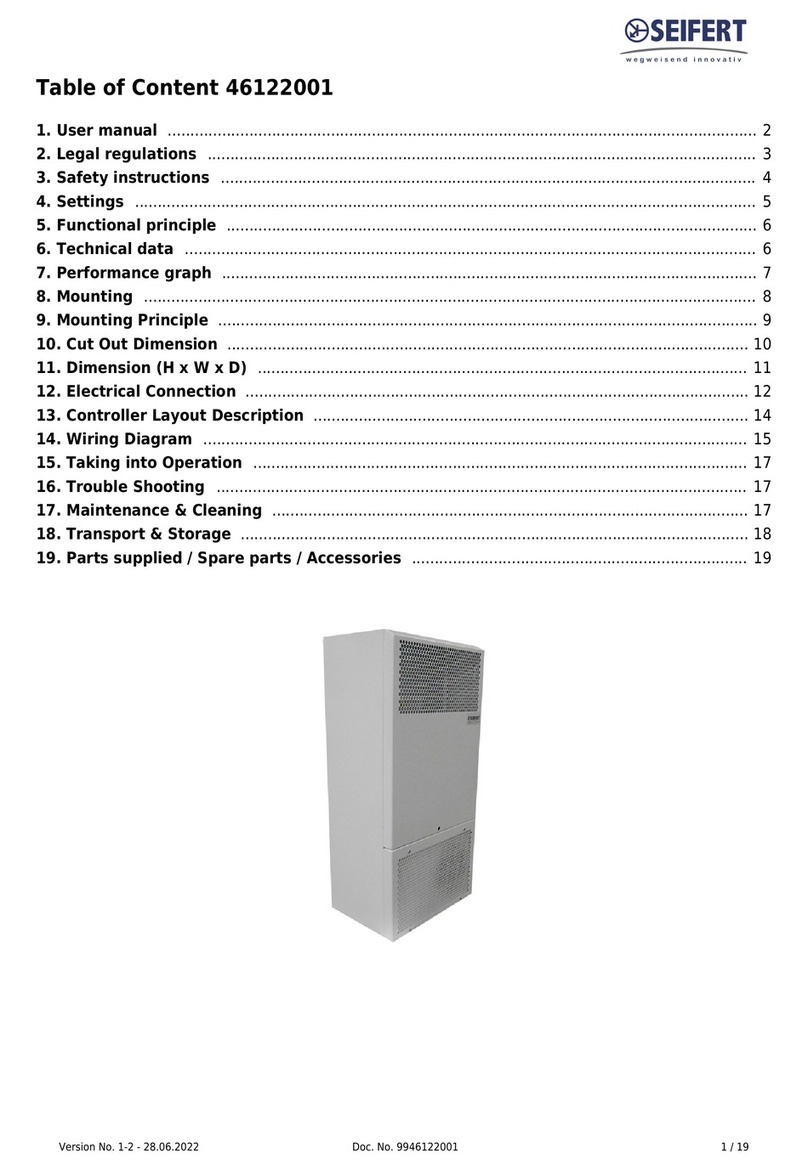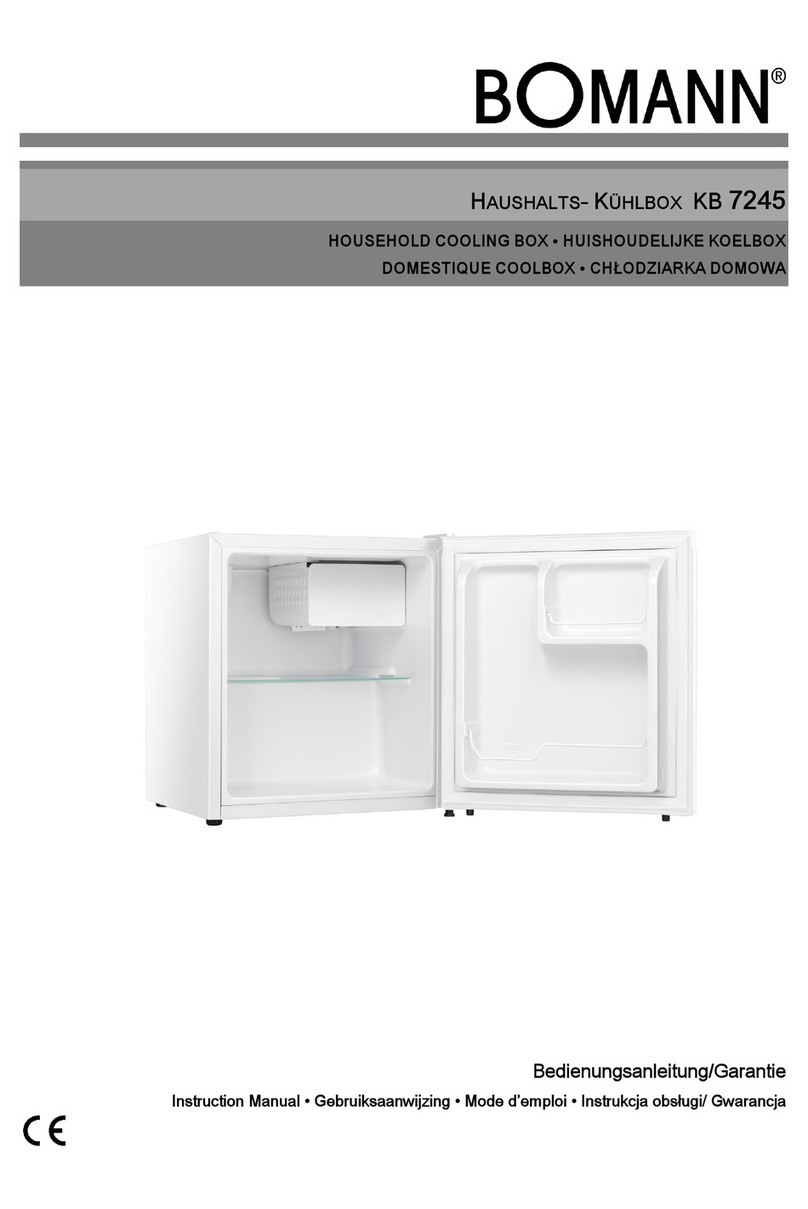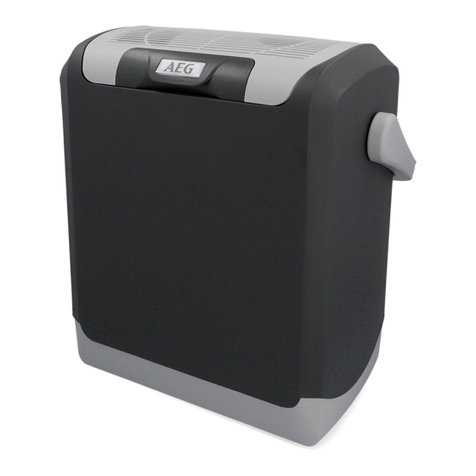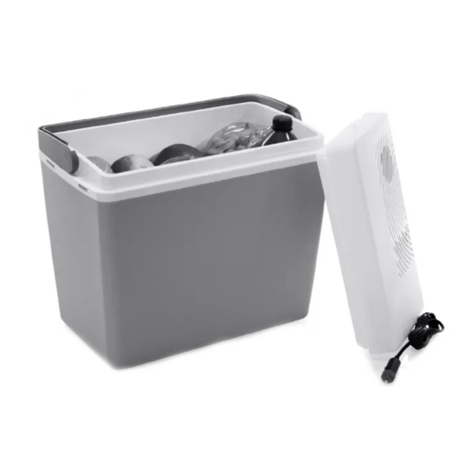
GB
1. INTRODUCTION
This guide has been prepared for the operator of Carrier Transicold re-
frigeration units. It contains basic instructions for the daily operation of the
refrigeration unit as well as safety information, troubleshooting tips, and
other information that will help you to deliver the load in the best possible
condition.
Please take the time to read the information contained in this booklet and
refer to it whenever you have a question about the operation of your Car-
rier Transicold unit. This manual refers to the standard model. Some op-
tions may not appear in it, and in such cases you are requested to consult
our Technical Services.
Your refrigeration unit has been engineered to provide long, trouble-free
performance when it is properly operated and maintained. The checks
outlined in this guide will help to minimize on the road problems. In addi-
tion, a comprehensive maintenance program will help to insure that the
unit continues to operate reliably. Such a maintenance program will also
help to control operating costs, increase the unit's working life, and im-
prove performance.
When having your unit serviced, be sure to specify genuine Carrier Tran-
sicold replacement parts for the highest quality and best reliability.
At Carrier Transicold, we are continually working to improve the products
that we build for our customers. As a result, specifications may change
without notice.
2. IDENTIFICATION & NOISE LEVEL
Keep the fold out sheet while reading the instructions.
2.1. NAMEPLATE
Each unit is identified by a nameplate (A) attached to the frame of the
unit. The nameplate identifies the complete model number of the unit, the
Serial Number (B) and some other information.
If a problem occurs, please refer to the information on this plate,
and make a note of the model and Serial Number (B) before
calling for assistance.
This information will be needed when you contact a technician
so that he may properly assist you.
The sticker (C) indicates the noise level in Lwa (sound power
level).
2.2. NOISE LEVEL CHARTS
Unit Maximum Sound Power level
LWA(dB)
VATNA 200/300/400 54
3. SAFETY
3.1. WARNING AND PRECAUTION
This manual contains safety and service instructions to follow
in order to prevent any accident. Some of following stickers
have been placed on the product for your SAFETY.
•NEVER manipulate cab command when driving.
•NEVER intervene on the unit, for any service or
maintenance operation, contact your Carrier service centre.
•NEVER remove safety elements (grill, skin, metal
sheet). If damaged, contact your Service Center for
replacement.
3.2. RISKS
Contact your medical assistance in case of accident.
GENERAL RISKS
Burning with hot and cold test.
Cuttings.
Noise level.
Exhaust gas:
- DO NOT use the unit in a closed space.
Asphyxiation:
- Leave the doors open when working inside the
body.
Risk of slipping going up in the body:
- Ice on the floor.
Risk of slipping going out of the body:
- Leak of refrigerant.
Electrical risks – when connecting and disconnecting
standby plug.
3.3. WARNING STICKERS MAINTENANCE
1. Keep the warning pictograms clean and without any obstruction
material.
2. Clean the pictograms with water and soap and wipe them with soft
fabric.
3. Replace damaged or missing pictograms with new pictograms
available in Carrier network.
4. If a component having a pictogram is replaced by a new one, be sure
that the new component has the right pictogram.
5. Place a warning pictogram by applying it on a dry surface. Press to
external sides to eliminate air bubbles.
4. OPERATION
4.1. CONTROL BOX DESCRIPTION
Operation of these units is automatic.
During temperature pull-down and plate freezing, the unit operates unin-
terrupted.
When the eutectic solution is frozen, the unit shuts down and goes into
pressure-control mode (low pressure).
62-61954-01 2
